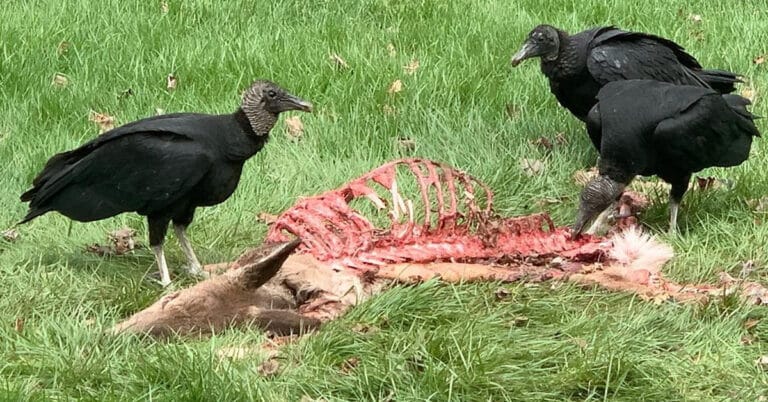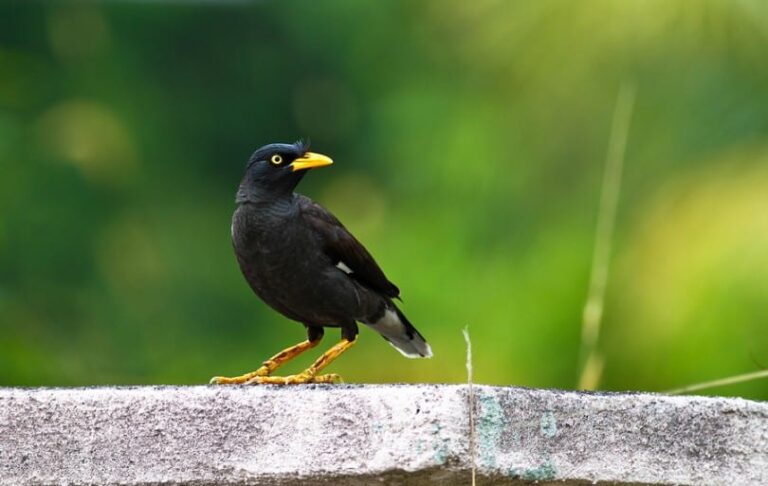Red Birds: 8 Of The Most Iconic & Science Behind Their Color
It is fair to say that the red birds are the rays of the sun that once fell to earth! Although birds come in the most incredible colors, there are few things in the world more impressive than seeing a red bird in a bright green field or a snowy forest on a winter day.
Having this excitement in mind, you might want to learn which iconic birds carry the status of red birds, what purpose this color evolution serves, and what exactly causes this plumage coloration. In this article, we’ll try to cover all of these questions.
8 Most Iconic Red Birds
1. Northern Cardinal

Do you remember Red, the strong defender of the nest and enemy of pigs from the famous video game “Angry Birds? You might now be aware of the fact that his character was inspired by the real bird species — the Northern Cardinal — a bird that stands out with its bright red color and punk hairdo.
Following their preference to spend their lives in forests, gardens, and shrublands, Northern Cardinals can be found mainly from southern Canada to Mexico. These kinds of red birds are the most territorial and often defend their premises with their characteristic chirping. With that in mind, their song is associated not only with territorial behavior but also with attracting a partner.
Surprisingly, Northern Cardinals are monogamous and raise only 1 or 2 nestlings per year. Like the female cardinal, the male cardinal assumes the responsibility of raising the offspring and fulfills his fatherly duties until and after the eggs hatch.
2. Scarlet Macaw

The Scarlet Macaw is Native to a native red bird in Central and South America that features a brilliant mix of red, blue, and yellow hues. Not to mention this unique combination of colors, amazing intelligence, and ability to learn phrases makes the Scarlet Macaw one of the most beloved exotic birds worldwide.
Sadly, due to deforestation, habitat loss, and poaching, the Scarlet Macaw population is rapidly declining, but with this in view, hopefully, international organizations and national parks will do their best to save these unique red birds.
Take our heartfelt advice, and if you get to Brazil, Bolivia, Colombia, Paraguay, Ecuador, and Peru, try to catch a glimpse of this incredible beauty in the wild.
3. Scarlet Ibis

If you’re interested in ancient Egyptian civilization along with red birds, the next representative on our list will make an unforgettable impression on you. At this point, let us introduce you to a species whose historical significance dates back to ancient Egypt.
To put it simply, Ibis was often depicted in hieroglyphs and was considered by the Egyptians to be the earthly form of Thoth, an ancient god of wisdom and magic. With long beaks and red feathers, the Scarlet Ibis is one of the descendants of this historic ibis, which makes them one of the most stunning red birds in the world.
In terms of physical appearance, almost all parts of the Scarlet Ibis’ body are red, but still, the pigment varies slightly from part to part and adds even more dignity to the visual. Scarlet Ibis use their long, curved beaks to find food and feed mainly on crabs, shrimp, and shellfish. Nowadays, scarlet ibis live mainly in South America and the Caribbean wetlands.
4. Summer Tanager

As you have probably guessed from the title, Summer Tanager is a sun-loving songbird. However, their bright red coloring varies significantly by gender. Usually, this species of red bird feeds on insects such as bees, beetles, flies, and spiders, in addition to berries.
Therefore, if you are familiar with the birds’ lifestyles, you will realize even from their diet that the Summer Tanager has to initiate thousands of miles of north-south migration during the late summer.
Sadly, the population of Summer Tanagers and the availability of suitable food and habitat for them are being significantly affected by drastic climate change, and conservation activities to save them are becoming increasingly important.
5. Vermilion Flycatcher

When you first catch a glimpse of the Vermilion Flycatcher, you may even find it hard to believe that this bird is real and assume it’s a painting. Similarly to other red birds we’ve discussed, only the male Vermilion Flycatchers have been blessed with a bright red color.
Keeping the color in view, do you know what else is so charming about Vermilion Flycatchers? With 100% certainty, the spectacular process of preparation for reproduction. While it is happening, with a harmonious chirp, the male Vermilion Flycatcher gracefully soars into the air and comes down to the ground in a spectacular zigzag motion.
After a successful mating, the female takes up grasses, mosses, and feathers to build a cup-shaped nest in a low tree or bush. Considering vermilion flycatchers feed primarily on insects, their nests are commonly found in forests, savannahs, and grasslands.
6. House Finch

Perhaps you could easily figure out from the name that the House Finch lives close to people and therefore does not refuse the food provided by them. Although this species is not as strongly pigmented as other red birds, the House Finch unquestionably deserves to be on our list, considering the head and front of the breast of the male House Finch are red. Conversely, females usually have a dark gray-brown coloration.
Unlike most red birds, the House Finch is quite a hardy bird and is willing to stay year-round in its native habitat despite the unbearable cold of winter.
7. Crimson Sunbird

Although our list has come to an end, we are sure that another representative of red birds, the Crimson Sunbird, will excite you no less. As a fact, this colorful and attractive species is unofficially considered the national bird of Singapore, but fortunately, its place of residence is not limited only to Singapore and you can observe these red birds in the rainforests of South and Southeast Asia.
In terms of appearance, mild Crimson Sunbirds’ chest and back are covered by crimson feathers. On the other hand, their belly is light green and their tail is yellow. In contrast, female Crimson Sunbirds feature yellow and green feathers. The eye-catching red color is not the only charm of the Crimson Sunbird. These impressive red songbirds also delight those around them with pleasant chirping.
In terms of feeding patterns, the Crimson Sunbird usually eats the nectar of flowers. They especially enjoy gathering nectar from a flower. Interestingly, in the process, they might look like hummingbirds due to their small body size and fast wing movement.
8. Red Crossbill

You may be thinking that after so many special red birds, there is nothing left worth mentioning, but hopefully, you are wrong and Red Crossbills are the last but not least red bird on our list. These tiny wonders present the entire color palette, starting with red, orange, and yellow, followed by brown, green, and black.
Male Red Crossbills have bright red or orange feathers. On the contrary, females usually have yellow or green feathers. This species of red bird feeds mainly on pine and sunflower seeds, and their beaks are adapted to the process of easily obtaining these seeds. In most cases, Red Crossbills reach about 6.2 inches in length.
Coniferous forests in North America, Europe, and Asia are primary habitats for Red Crossbills, which remain faithful to these habitats even during the winter. Nevertheless, some Red Crossbills still travel south in the winter and return to their native areas in the spring.
What Makes Birds Red?
As a result of studying the genomes of thousands of birds, scientists have identified a specific gene that is found in the skin and liver of birds and provokes their red coloration.
In other species of red birds, a gene called CYP2J19 takes part only in the production of the red eye pigment. But for red-feathered birds, this gene turns out to be much more powerful because it enables the bird’s body to convert the yellow pigment received from plants, fruits, and vegetables into red.
In simple terms, the only way to obtain red pigment is to produce it physiologically. The reason is that, unlike yellow, it can’t be obtained from food.
Turning our attention to the fact that the red pigment is produced in the liver, we can assume that it can detoxify the body from harmful substances. Therefore, the brighter red the bird is, the more its body is freer from chemicals and female partners show more interest. But it’s quite reasonable, as, after all, it is about leaving a new, healthy offspring.
Final Thoughts
After reading this article and getting to know the 8 most beautiful red birds, you probably don’t doubt that red birds are one of the most beautiful and unique inhabitants of the earth that cheerfully add magic to life. And this applies not only to their appearance but to their behavior patterns as well.
Now, every time you see a red bird, try to guess its identity and use your knowledge to pleasantly enlighten the people around you. What’s better than knowing about the distinctive residents of your planet?

Nato is a content writer and researcher with a background in psychology who’s eager to explore the wonders of nature. As a travel enthusiast and animal lover, she hopes to inspire others to discover and cherish the beauty and importance of the natural world.







